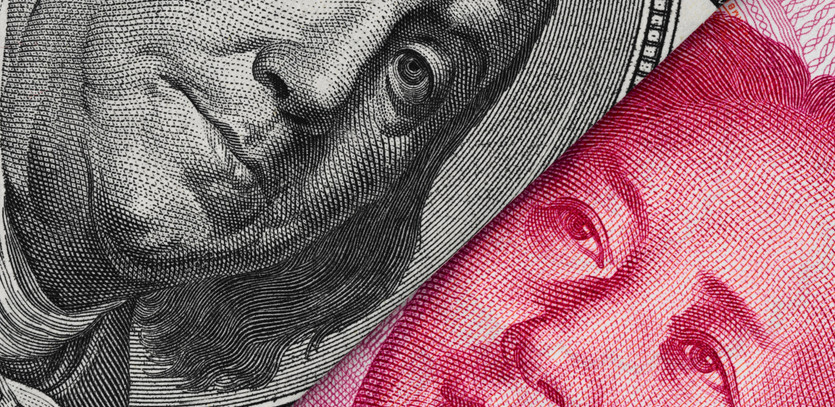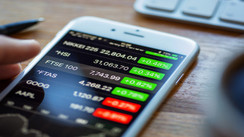Deciphering the Yuan and Renminbi
The Roots and Terminology
China's economic ascent in recent decades has captivated the world's attention. A vital part of understanding China's economic journey is decoding its unique currency system. The yuan and the renminbi are not merely two interchangeable names for Chinese currency. The term 'renminbi', translated to English, signifies "people's currency". It's an umbrella term used to describe the entire currency system of China. In contrast, 'yuan' represents a specific unit of the renminbi, much like 'dollar' or 'euro' denotes specific units of currency. This distinction is essential for those looking to engage in China's economic and financial landscape.
Historical Context
China's storied history encompasses vast dynasties, colonial interventions, revolutions, and more recently, economic reforms. The development and concept of currency, unsurprisingly, underwent numerous transformations corresponding to these historical shifts. The present-day design of the renminbi and yuan predominantly took shape in the 20th century, following the establishment of the People’s Republic of China. Its evolution is intrinsically tied to China's economic strategies and goals.
Interplay Between the Yuan and the Dollar
The Historical Connection
The economic relationship between China and the U.S. is a tapestry woven with strategy, opportunity, and sometimes contention. Historically, the value of China's economy, and by extension, its currency, was strongly linked to the U.S. dollar. This connection has roots in trade pacts, global economic realignments, and mutual financial benefits. For many years, China decided to peg the yuan directly to the dollar, emphasizing the depth of this relationship.
Today's Landscape
China's rising stature on the global stage and its intricate trade relationships have nudged it towards diversifying the reference points for its currency. While the yuan's exchange rate now incorporates a basket of international currencies, the U.S. dollar's overarching influence is palpable. This multifaceted approach provides China with the flexibility to navigate global economic turbulence more adeptly.
A Note on Global Dominance of USD
The U.S. dollar's commanding presence in international finance isn't a recent phenomenon. Its stature can be traced back to pivotal moments like the 1944 Bretton Woods Agreement. Here, a vast majority of world currencies were pegged to the dollar (which was tied to gold). This agreement elevated the dollar to an unparalleled status in global finance, a position it largely retains.
The Mechanism of Dollar Accumulation in China
Global Trade Dynamics
The contemporary globalized economy entails a ceaseless exchange of goods, services, and consequently, currencies. Chinese exporters, given the sheer scale of their operations, often receive payments in dollars. This results in a steady influx of U.S. dollars into the Chinese economic system.
The Role of Local Banks
Banks in China are pivotal cogs in this machinery. When exporters deposit their dollar earnings, these banks offer them renminbi in exchange. This transaction ensures that the local economy continues to churn, as businesses receive the essential renminbi to maintain and expand their operations.
Central Bank's Strategy
These amassed dollars aren't left stagnant. They find their way to the People's Bank of China, the nation's central bank. Here, strategic decisions are made, often resulting in these dollars being invested in instruments like U.S. Treasury bonds. This approach not only earns China interest but also plays a part in financing the U.S.'s fiscal needs.
Strategies Employed by China's Central Bank
Guardians of the Currency
The People's Bank of China (PBOC) plays an instrumental role in shaping China's economic trajectory. Far from being a passive entity, the PBOC employs proactive strategies, considering both domestic requirements and global economic trends, to calibrate the yuan's position.
Adapting to a Changing Landscape
In response to evolving economic realities, the PBOC utilizes various tools ranging from manipulating interest rates to adjusting reserve requirements. Significant shifts in the U.S. dollar's value often prompt the PBOC to intervene, perhaps by selling or buying U.S. Treasurys, ensuring economic stability and liquidity.
China's Currency Manipulation Allegations Explained
The Controversy
Currency, in the world of geopolitics, isn't just a medium of transaction. It can be wielded as an economic weapon. By adjusting its value, nations can potentially achieve competitive advantages in trade. Given China's export behemoth status, it's frequently under the scanner for such strategies.
The 2019 Incident
The year 2019 marked a significant escalation in this narrative. The U.S., under the Trump administration, officially labeled China a "currency manipulator". This charged allegation stemmed from suspicions that China was intentionally devaluing the yuan to bolster its export competitiveness against global rivals.
Implications of the Yuan's Value on the Global Stage
Trade Dynamics
When the yuan's value decreases, it translates to Chinese goods being more affordable for international buyers. While this scenario is delightful for global consumers, it's a potent catalyst for heated debates on trade equity, potential job losses in competing economies, and the erosion of economic sovereignty.
The Ripple Effect
The strategies and policies China adopts for its currency have consequences that go beyond mere trade balances. They resonate through global interest rate decisions, inspire fiscal strategies in different nations, and even sway global economic sentiment and forecasts.
Engaging in Chinese Currency Investments
The Investment Landscape
The yuan, given its significance in global trade, often emerges as an attractive proposition for investors. Yet, this arena is dotted with both tantalizing opportunities and lurking unpredictabilities.
Investment Vehicles
There's a plethora of instruments that provide exposure to the yuan's movements. Investors can directly engage with the currency or opt for structured pathways. Funds such as the WisdomTree Chinese Yuan Strategy Fund (CYB) and Market Vectors Chinese Renminbi/USD ETN (CNY) present avenues for both aggressive and conservative investors.
FAQs
-
Why are the yuan and renminbi frequently mistaken for the same?
Their intertwined functions often result in this mix-up. However, they have distinct roles in China's monetary framework. -
What gives the yuan its value?
The yuan derives its value from a combination of China's robust economic performance, trust in its governance, and the asset reserves overseen by the People's Bank of China, which encompass significant foreign assets and gold reserves.





